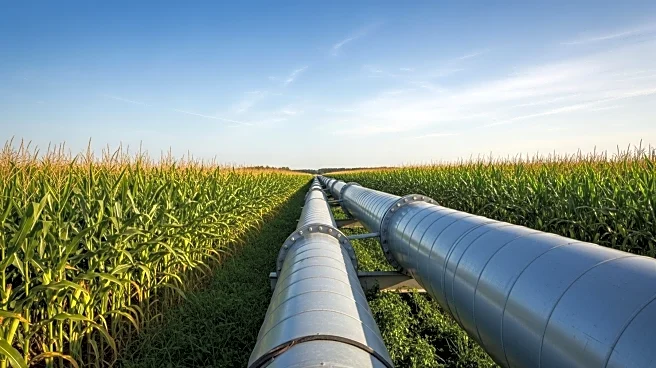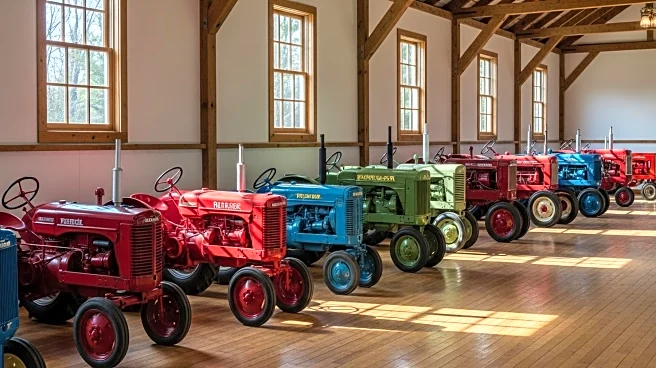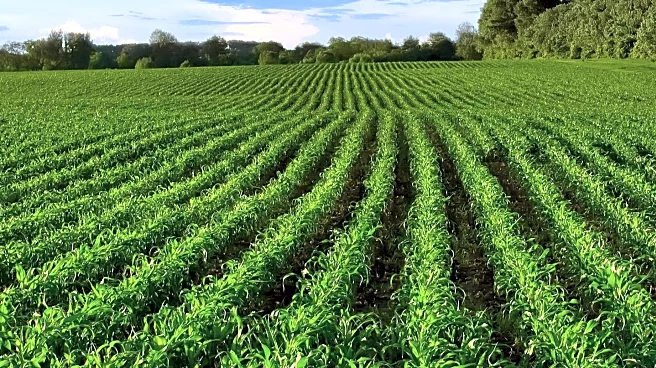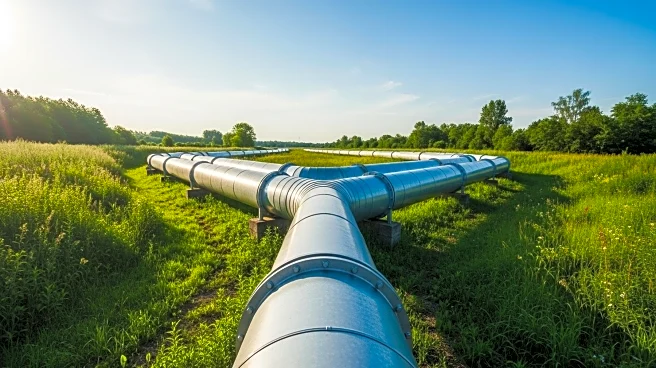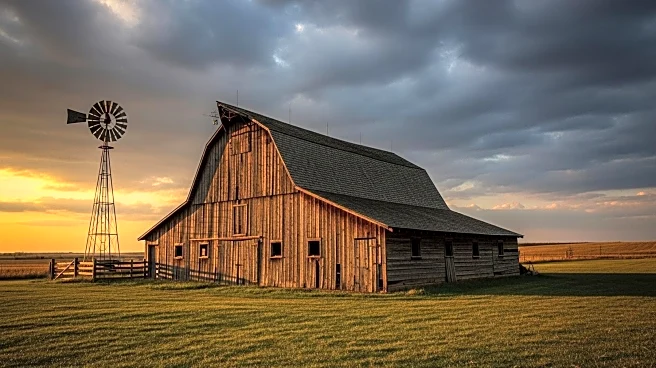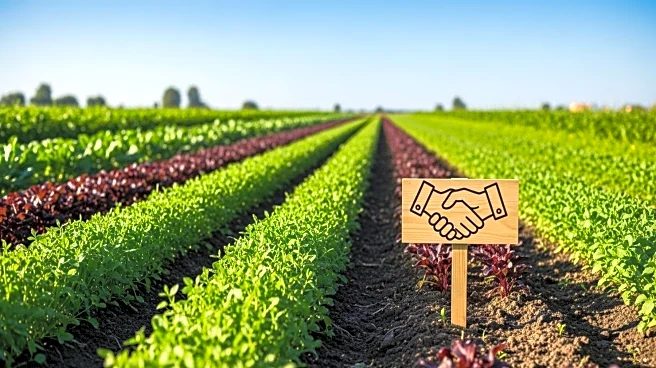What's Happening?
Farmland values in the U.S. have experienced a deceleration in growth rates in 2024, according to recent data. The USDA reports a 5 percent increase in total farm real estate values, with cropland and pasture values rising by 4.7 percent and 5.2 percent respectively. This marks a slower growth rate compared to previous years. Factors contributing to this moderation include high interest rates, trade disruptions, and declining commodity prices. Key agricultural states such as Kansas, Iowa, and Nebraska have seen significant fluctuations in farmland values, with recent data indicating stabilization in growth rates.
Why It's Important?
The slowing growth in farmland values has significant implications for U.S. agriculture and the broader economy. High interest rates and declining commodity prices are putting pressure on farm incomes, potentially affecting farmers' ability to invest in land and expand operations. This trend could impact the financial stability of rural communities and the agricultural sector, which is a critical component of the U.S. economy. Additionally, the competition for farmland from institutional investors and hedge funds may alter traditional land ownership patterns, affecting local farmers' access to land.
What's Next?
Looking ahead, the farmland market may continue to face challenges due to economic pressures and trade policies. The potential for further interest rate hikes and ongoing trade disputes could exacerbate the slowdown in farmland value growth. Farmers and investors will need to navigate these uncertainties, possibly adjusting their strategies to mitigate risks. Monitoring commodity prices and government policies will be crucial for stakeholders in the agricultural sector as they plan for the future.
Beyond the Headlines
The shift in farmland values may have deeper implications for land ownership and rural development. As institutional investors increasingly enter the farmland market, traditional farming communities may face changes in land access and ownership dynamics. This could lead to shifts in rural demographics and economic structures, with potential impacts on local economies and cultural landscapes.

